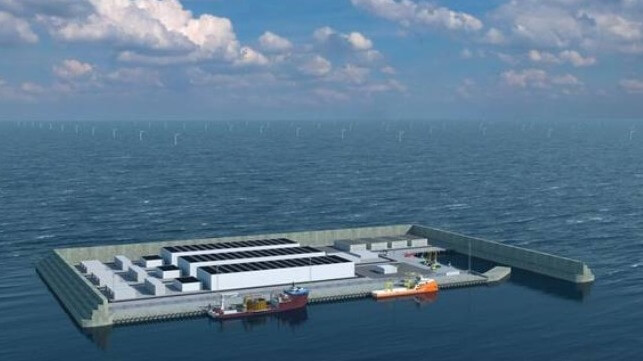Germany Signs Landmark Deal to Buy Denmark's Green Hydrogen

With Denmark dedicated to large-scale production of green hydrogen from its offshore wind capacity in the North and Baltic Seas, Germany has pledged to provide a ready market. Last week, Danish climate and energy minister Lars Aagaard and his German counterpart, Minister for Economy and Climate Robert Habeck, signed a declaration that could see the two countries establish a hydrogen pipeline.
The agreement constitutes a joint work plan for the ramp-up of a German-Danish hydrogen infrastructure. The two partners also agreed to apply for EU funding, such as the “Connecting Europe Facility,” and to work on national hydrogen legislations.
While the length of the pipeline is still unclear, the idea is to develop a land-based line connecting the Danish region of West Jutland to northern Germany. The ministers revealed that they expect the hydrogen pipeline to be functional by 2028.
The Danish-Germany partnership is a huge boost to Denmark’s ambition to become Europe’s green hydrogen powerhouse. Recently, Denmark inaugurated the “hydrogen islands” project, which consists construction of one artificial island in the North Sea and another in the Baltic Sea. The idea is to use the islands for production of green hydrogen from the offshore wind energy and transport it across borders via offshore hydrogen infrastructure.
In essence, the hydrogen islands are expected to serve as cornerstones of large-scale deployment and integration of renewable energy worldwide. The key element is the Power-to-X process, where wind energy is used to split water into hydrogen through electrolysis.
Recently, Danish lawmakers approved subsidies worth $184.83 million aimed at supporting green hydrogen production. This will help to build Denmark’s electrolysis capacity to 4-6 gigawatts by 2030. Such capacity will help Denmark reach its goal of green hydrogen production of 20 TWh during the period.
Germany estimates it will consume upwards of 90 TWh of green hydrogen by 2030, up from 60 TWh of “gray” hydrogen from fossil fuels today. Berlin hopes Denmark could help to fill this demand.
This could also explain the recent Germany-Norway green hydrogen partnership, which saw the two countries pledging cooperation to ensure large-scale supply of green hydrogen by 2030. The Norwegian energy company Equinor, Norwegian gas system operator Gassco and other partners are already exploring construction of a hydrogen pipeline connecting Norway and Germany.
Green hydrogen as an energy option has become popular in Europe with the ongoing Russia- Ukraine war pushing countries in the region to end reliance on Russian oil and gas.
Under the 2020 EU Hydrogen Strategy, the ambition is to produce 10 million tons and import 10 million tons of renewable hydrogen in the EU by 2030. The focus of these actions is to accelerate uptake of renewable hydrogen, ammonia and other derivatives in hard to decarbonize sectors like shipping.
